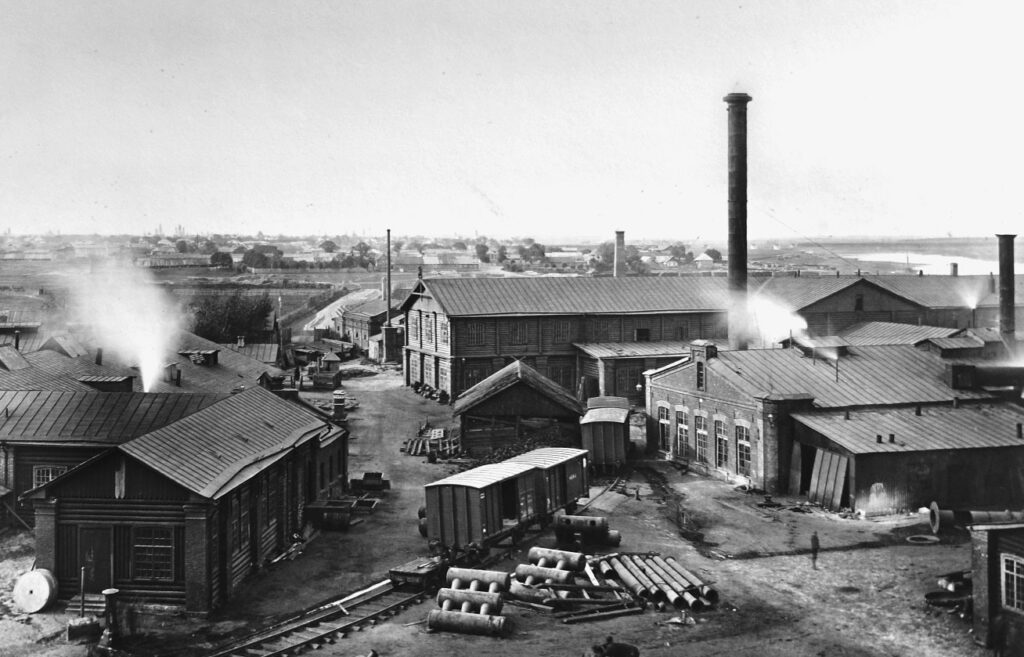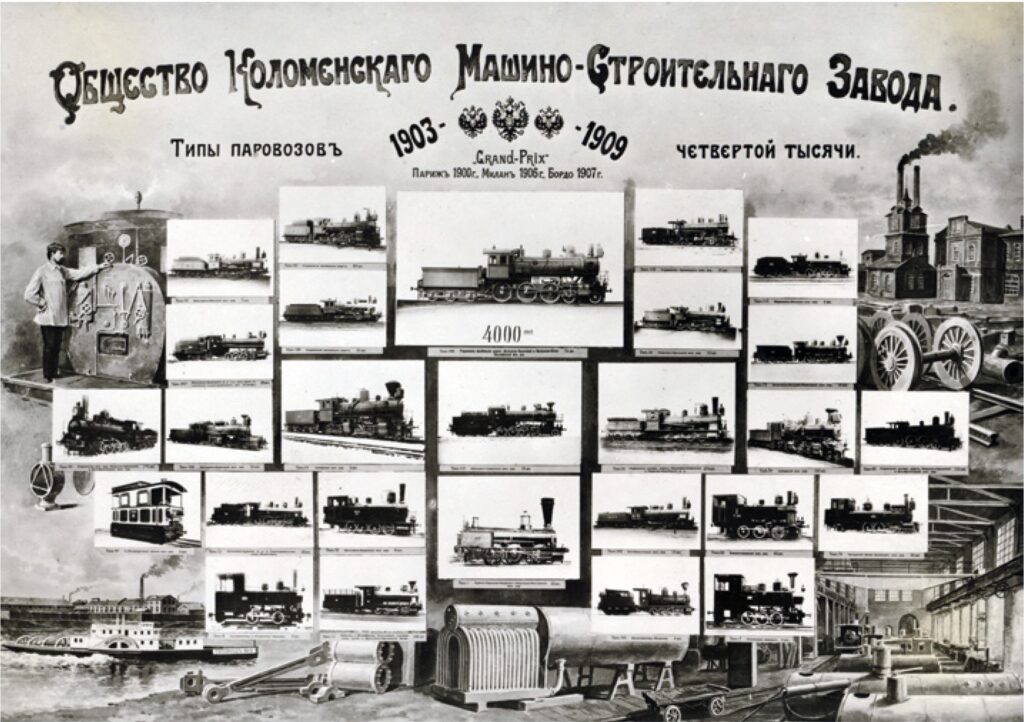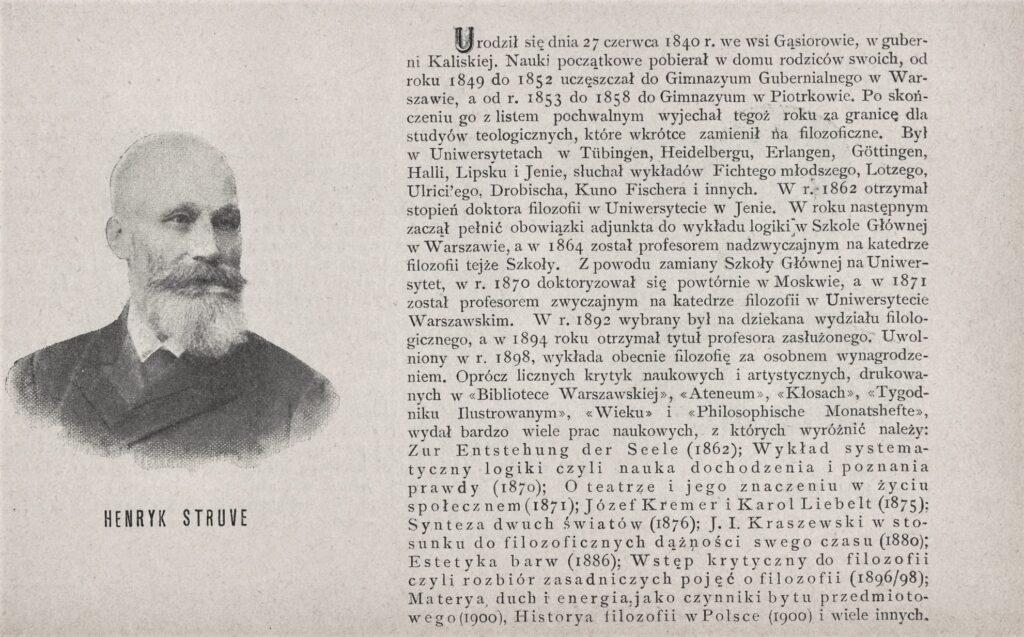There are two families called Struve and both families had members who went to Russia and later Poland and who made names for themselves. However all too often these two Russian-based Struve families are conflated and confused with one another. Georg Wilhelm Struve (1793 – 1864, ennobled in Petersburg in 1831) was the founding father of a line of Russian astronomers and directors of observatories who were not descendants of Georg Adam Struve. Georg Wilhelm’s ancestors were farmers in Altona and his descendants include: Friedrich Georg Wilhelm von Struve, Otto Wilhelm von Struve, Otto Struve, Peter Berngardovich Struve, etc. do not belong to the family of Struve that has its origins in Magdeburg and is described on this website.
Examples of Struves who are NOT members of the Struve family described on this website include:
From here on down we will deal ONLY with members of the Struve family in Russia and Poland who descend from Georg Adam Struve (1619 – 1692) and Susanna Berlich (1647 – 1699) >> Friedrich Gottlieb Struve ( 1676 – 1752 ) and Johanna Dorothea Werner (? – 1729?) >> Anton Sebastian Struve (1729 – 1802) and Sophie Friederike Dorothea Reimers (1733 – 1795) >>

Amand Yegorovich Struve (Russian: Аманд Егорович Струве) (30 May 1835 – 12 September 1898) was a Baltic-German military engineer and bridge specialist of the Russian Empire. Struve’s great grandfather was Anton Sebastian Struve (1729 – 1802); grandfather was Johann Christoph Gustav von Struve (1763 – 1828); and his father was Georg Heinrich Christoph Franz Struve (Jerzy Krzysztof Franciszek Struwe) (1802 – 1886).
He was a graduate of the main artillery school of the Imperial Russian Army and received his engineering education at the Nikolaevsky Engineer Academy.
From 1858 to 1862 he was the chief of engineer in charge of construction of the Moscow-Nizhny Novgorod Railway, which was opened from Moscow to Vladimir on 14 (26 New Style) June 1861 and to Nizhny Novgorod on 1 (13) August 1862.
In 1863 he established workshops at Kolomna to manufacture iron structures for bridge spans. This facility was converted in 1871 to manufacture machinery under the name A. Struve, Kolomna Maschinenfabrik with his brother Gustav as manager. Kolomenskij mašinostroitel’nyj zavod (Mechanical Engineering and Foundry Plant Struve brothers). In summer 1863 railway line Moscow-Saratov extended to Kolomna.
Enterprising and talented military engineer Amand Egorovitch Struwe won a contract for construction of a bridge across the Oka river and for this purpose built temporary workshops on the left bank of the Oka where the Moskva river flows into it. He took 10 dessiatinas (= approximately 2 ¾ acres) of land on lease from peasants of Bobrovo village and was granted a license “to produce different constructions, both of industrial and factory type”. This laid the foundation of the largest plant in Russia – Kolomensky Zavod.
The plant produced the first Russian steam locomotives, steamships, collaborated with Nobel’s factories and produced diesel engines, electric trams, and later the world’s first motor ships. This was the forerunner of today’s Kolomensky Zavod (German: Lokomotivfabrik Kolomna).
Struve was chief of construction in 1864-65 of the Oka bridge of the Moscow-Ryazan Railway, the first bridge in Russia intended for both railway and road traffic. He next supervised construction of a section of the Moscow-Kursk Railway; this road was opened from Moscow to Kursk on 17 September 1868.
From 1868 to 1870 Struve was chief of construction of the Struve Bridge on the Dnieper at Kiev. This was the first Russian bridge in which the foundation was laid using the caisson method. His subsequent bridge projects included the Dnieper bridge at Kremenchug (1870-72), the Liteiny Bridge on the Neva at St. Petersburg (1875-79), and the Alexandrovsky Bridge on the Volga at Syzran (1876-1880).

built by Amand Struve in 1873
Below, the Struve bridge – The Darnytskyi railway bridge was the first all-metal railway bridge across the Dnieper in Kiev. At the time of construction it became the longest bridge in Europe. It was consecrated and opened on February 13, 1870.

Upon completion of the Liteiny Bridge in 1879, Struve was promoted to Major General. When his brother Gustav died in 1882 he assumed management of the works at Kolomna.
In Kiev, Struve built a central sewerage system, horse-pulled railway (1885-86), the first electric tramway in the Russian Empire (1891-92), and a gas-powered street lighting system.
Promoted to Lieutenant General in 1896, Struve died at Kolomna on 31 August (12 September) 1898.
Gustav Egorovich Struve (1834 -1882) – Russian engineer and entrepreneur. Major General (1879), honorary citizen of the city of Kolomna and the Moscow province. Great-grandson of Anton Sebastian von Struve, grandson of diplomat Gustav Struve, son of the forest manager of the Kingdom of Poland, Georg von Struve (1802-1886), brother of Amand (above) and Heinrich Struve (below). Many of Struve’s relatives (uncles, cousins) were Russian diplomats. Among the eight children are the musical figure Nikolai Struve.
He graduated from the courses of the Main Engineering School. He served in the engineering service of the Russian Southern Army, where he participated in the engineering reconstruction of the Akkerman fortress, the construction of batteries in the Odessa harbor and the Nikolaev defensive line. Since 1863 one of the leaders of the reconstruction of the Kronstadt Fortress.
In 1866 he took over from his brother Amanda the management of the Struve brothers’ Plant of Engineers (now the Kolomna Plant) and managed it until the end of his life. Expanding the range of products, he organized the production of steam locomotives (1869) and steamboats (1878), and doubled the territory of the plant.

Nikolai Gustavovich Von Struve (April 13, 1875 – November 3, 1920, Paris) – Russian musical figure. The son of engineer and entrepreneur Gustav Struve, and nephew of Amand Struve, a descendant of a dynasty of diplomats and civil servants.
Nikolai’s mother, Olga Fyodorovna von Driesen, was the daughter of the famous Fyodor Vasilyevich von Driesen, a general, hero of the war of 1812, who lost his leg at Borodino (the portrait of FV von Driesen (right) can be seen in the 1812 Gallery of the Winter Palace).
The family of Gustav and Olga was numerous: Nikolai had two brothers – Sergei (about him a little below) and Vasily, four sisters – Alexandra, Ekaterina, Rosalia and Margarita. The family lived in a house at the Kolomensky Zavod, and after the death of their father they moved in 1882 to the Iberdtsy estate in Ryazan province. The children were raised by a mother who was an excellent pianist, a student of F. Spindler, as well as her daughter Klara Gustavovna von Gref and EI Petsch, who taught children the German language and playing the piano.
The time spent in Iberdtsy was significant for Nikolai von Struve. Here he, together with the husband of his sister Rosalia, Nikolai von Driesen, took part in family theatrical performances. Nikolay von Driesen and Nikolay von Struve invited their friends – actors and musicians to the Iberdi to hold home concerts and performances, as evidenced by photographs preserved in the family archive of Sergei Sergeevich and Igor Sergeevich Budarin, descendants of the Struve-Drizen.
Initially, Nikolai tried to follow in his father’s footsteps: he entered the Riga Polytechnic Institute. The choice of this institution was also not accidental – after all, Nikolai’s maternal grandfather F.V. von Driesen was the commandant of Riga from 1826 to 1855, and his family lived there. But his mother’s genes took their toll – without completing his studies, Nikolai entered the Moscow Conservatory, in the composition class of Nikolai Sergeevich Zverev. Then he left for Dresden, where he studied at the conservatory under the famous German composer and theoretician Felix Dresecke.
When Nikolai’s uncle, Amand von Struve, who managed the plant in Kolomna and his son, died in 1898, Alexander Kruedener-Struve, who helped him in his business, invited Nikolai von Struve (as the son of one of the founders of the plant and shareholder) to manage the enterprise. Nikolai, without bitterness in his heart, refused the offer, choosing freedom and music.
Olga Feodorovna’s genes were also passed on to Nikolai’s brother, Sergei Struve (1881-1915). Sergei, like his grandfather, chose a military career: he graduated from the Nikolaev Cavalry School, became an aide-de-camp of Nicholas II, but his life was fond of music. Sergei took guitar lessons from the famous concert guitarist and teacher V.A. Rusanova. Rusanov dreamed of publishing a magazine for guitarists, and Sergei Struve gave him the necessary amount of money – two thousand rubles.
The magazine “Guitarist” appeared, the first issue of which was published in 1904. An obituary appeared in one of the 1915 issues: “On February 27, on the Eastern Front, His Majesty’s aide-de-camp, Sergei Gustavovich von Struve, died a heroic death”
But back to Nikolai von Struve. In Dresden, he married Vera Pastukhova, the daughter of Russian émigrés. The condition of the bride’s father was that Nicholas would remain in Germany and would not separate him from his daughter.
It was here, in Dresden, that the paths of Nikolai von Struve and Sergei Vasilievich Rachmaninoff converged. The biographer of Rachmaninov, Oscar von Riesemann, wrote about the close friendly contacts between the two musicians: “Isolation from the musical world of the homeland, mutual desire to exchange thoughts about music and everything in the world, common interests, mutual friends and, not least, simply sympathy, craving for each other soon brought the two musicians, who had never met before, to the shortest possible relationship. This friendship grew stronger in long walks, which often took them outside the city ”.
In Dresden, Struve and Rachmaninov were parishioners of one of the Orthodox churches – the temple of St. Simeon Divnogorets and tt was in Dresden that the friends dedicated their works to each other. During this period, Rachmaninov wrote the symphonic poem “Island of the Dead”, under the impression of the painting of the same name by A. Böcklin. On the title page of the score was written: “Nikolai Struve, as a sign of friendship, Dresden, April 17, 1909 “. Oskar von Riesemann noted: “No previous devotion was so warm; as a rule, Rachmaninov was so restrained in expressing his feelings … that the slightest deviation from his custom should be considered an exception and a sign of special disposition.”
The German researcher J. Heusler found in the German archives a number of works by Nikolai von Struve. These are vocal cycles based on verses by little-known German poets, as well as the vocal cycle “Sketches” on texts by Kozma Prutkov for voice and piano. The title page of the cycle’s score reads: “Dedicated to our dear friend S. V. Rachmaninov”.
The vocal cycle “Sketches” is an interesting experience of translating aphoristic prosaic text into music 23 short romances, united by tonal logic, made up a work replete with many findings in the field of musical language. Bold experiments in the field of translating speech intonation (traditions of Dargomyzhsky and Mussorgsky) in a vocal part are combined with sound-visual effects of a developed piano accompaniment. In the last romances, the piano texture is very reminiscent of Rachmaninov’s etudes-paintings, as if hinting at the addressee of the composer’s dedication.
The first performer of the Sketches was the wife of Nikolai von Struve, Vera. The composer’s works were constantly performed in the Dresden music salons and received good reviews in the press.
The name of Nikolai von Struve is closely related to the name of Sergei Koussevitsky. During the period of Sergei Alexandrovich’s tours abroad in 1906–1908, Rachmaninoff, appreciating the skill of Koussevitsky as a conductor, willingly played his piano concertos under his direction. The two outstanding musicians became close friends over time. In Germany they made new common acquaintances, and not only in the musical environment. Nikolai Struve contributed a lot to this. Rachmaninoff’s wife, Natalya Aleksandrovna, recalled: “In Dresden, Struve led a secular life, and they had many acquaintances in Dresden society”; some representatives of this society became friends and the Rachmaninov couple.
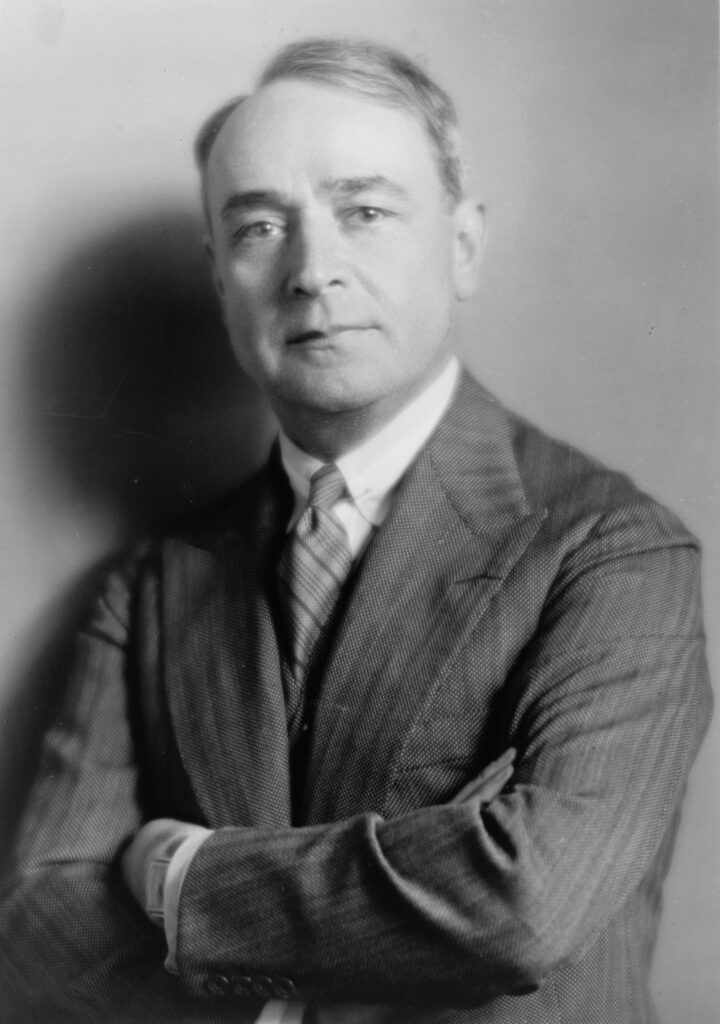
Vera Struve studied painting under the direction of Robert Sterl (1867–1932) impressionist artist, professor, and director of the Dresden Academy of Arts. The relationship between the student and the teacher soon grew into a friendship between the Struve and Sterl families. Robert was very sympathetic to Nikolai Struve. In a letter to Nikolia’s wife, he wrote: “A man with such a pure heart as he was is able to create heaven for another on earth”.
Acquaintance with the Russian musicians prompted Sterl to go on a journey across Russia. Twice (in July 1908 and in 1910) he visited the Struve estate in the village of Iberdtsi, from which he was delighted: “The estate itself, the estate is like a kingdom … there is a lot of forest and large meadows. For a painter it is simply a magnificent country.”
In Iberdzy, the country estate of his friend v. Struve not far Moscow, where Sterl was a guest for some time in 1910, he discovered a cheerful spring landscapes which he drew in in transparent, nimble drawing Chalk studies in a small format: fishermen laying out nets in the water standing, farmers fetching water with horse and cart and similar processes with an almost idyllic attitude. It was like taking a quiet breath before the exciting Impressions that awaited him on the Volga. “(Becker, Heinrich, Robert Sterl as a draftsman. Bielefeld 1952. p.29 f)
Nikolai von Struve became the business manager of RMI at the suggestion of Rakhmaninov, who, according to SA Satina, “gave himself up to this business with all his heart and completely went into it” [2, p. 41]. A. V. Ossovsky wrote: “Struve was the most active member of the council. As the business manager of RMI, he was his soul. Struve’s devotion to a new undertaking, his burning with the interests of the publishing house were unlimited ”.
Both Rachmaninoff and Koussevitsky appreciated the business and moral qualities of Nikolai von Struve. In addition to participating on the Board of Directors, Struve was responsible for all the administrative, organizational, economic and financial affairs of the RMI, as well as conducting correspondence, personal explanations with composers, and managing the publishing house’s music stores in Moscow and St. Petersburg. Having a permanent apartment in Moscow, he was in constant movement between Moscow, St. Petersburg, Berlin and Leipzig.
1917 was a difficult year for Nikolai von Struve. He was virtually left without a livelihood. He had to leave for Copenhagen, where Sergei Vasilyevich and his family soon joined him. As Rachmaninov recalled, in the choice of the place to stay “apart from other circumstances, the fact that Struve lived in Copenhagen also played an important role”
The Rachmaninovs rented a house in the same vicinity of Copenhagen as the Struves, and Sergei Vasilyevich began to prepare for upcoming concerts in Scandinavia. That year the families of Rachmaninoff and Struve were especially close. Together, they rented a cottage in the town of Charlottenlund for the summer; Rachmaninoff’s wife, Natalya Alexandrovna, studied culinary art from the educator of his son Nikolai von Struve. She later recalled: “… I took lessons over the phone and soon learned to cook well. Poor Sergei Vasilievich soon assured me that he had never eaten such a skillful chicken soup that I gave him.”
At the same time, pianist Ignaz Fridman, with whom Rachmaninoff met and became friends, performed with great success in Copenhagen. Nikolai Struve became a part of this small company. Often on Sundays, the three of them gathered for dinners at Fridman’s.
The life of Nikolai Gustavovich von Struve was interrupted by a tragic incident on November 3, 1920. He died in a Paris hotel: carried away by the conversation, he leaned over the railing and was hit by the elevator. It was a heavy loss for S. V. Rachmaninov, whose loyal friend Struve had been for many years. In his letter to Nikolai Gustavovich’s son Nikolai Rachmaninov he wrote: “His death finally struck me down; if you are an orphan, then so am I. He was my faithful and, moreover, my only friend ”
Struve’s mother, nee Baroness von Osten-Drisen, studied piano in Dresden with Fritz Spindler.
GEORGY ALEXANDROVICH STRUVE (1932 – 2004)

Georgy Alexandrovich Struve was a composer, choirmaster, conductor, educator, and public figure. People’s Artist of the RSFSR (1991), the founder of the studio movement in the country, the creator of a unique system of mass education in music and choral singing, was the President of the Federation of Children’s and Youth Choirs of Russia.
The son of the poet and writer Alexander Filippovich Struve (1875 – approx. 1939), the grandson of the military civil engineer Philip Yegorovich Struve (? – 1899).
In 1950 he graduated from the school of army musicians in Ufa. 1952 he began work as a singing teacher in the village. Nikolskoe, Balashikha district, Moscow region. 1953 he began to lead the school choir of the seven-year school in the village. Cherries. In 1958 he graduated from the conducting-choral department of the music school at the Moscow State Tchaikovsky Conservatory. 1959 on the basis of the choir of the seven-year school in the village. Vishnyaki created the first in the Soviet Union children’s choral studio “Pioneer”. In 1964, he completed his studies at the Moscow State Tchaikovsky Conservatory at the Faculty of Theoretical and Composition, under the class of Professor M.M. Bagryansky (conducting). In 1967, he graduated from the composition class there as a postgraduate student under Professor D.B. Kabalevsky.
From 1962 to 1987, he was the artistic director and chief conductor of the Moscow Regional Choir “The People’s Teacher”, he conducted a permanent seminar for music teachers of the Moscow Region. From 1973 to 1983, he headed the board of the choral society of the Moscow region, was deputy chairman of the All-Russian choral society for children and youth, chairman of the commission on creativity for children and youth of the Soviet society for friendship with foreign countries, later was deputy chairman of the All-Russian musical society for working with children and youth. 1975 led the permanent club “Kamerton” at the Union of Composers of Russia and the All-Russian Musical Society on the problems of musical education and education of children in the country and abroad,
Struve was an outstanding teacher who worked with children for more than half a century and mentored over 10 thousand students over the years. More than 400 of his students became professional musicians, many of them became honored artists, honored workers of education, culture, laureates of international, all-Union and all-Russian competitions. Many of them continue Struve’s work and work with children.
Struve was a student and faithful follower of D. B. Kabalevsky’s work on the general musical education of children and youth. He created a unique system of musical education. His methodology of choral solfeggio has become a handbook for teachers working in the field of musical education, adopted and approved by the Ministry of Education for grades 1-4.
Struve wrote over 200 works, mostly for children and youth. His songs were sung and continue to be sung by children of Russia and other countries, many of them (“My Russia”, “School Ship”, dozens of others) have already become classics and are included in the programs of kindergartens, general education and music schools in Russia and abroad.
With his choir group “Pioneer” he recorded about 30 discs with a total circulation of several hundred thousand copies, made more than 300 recordings on VR, dozens of programs on Central Television, wrote music for several feature films and many television programs.
Popular science films and television programs have been shot about him and his author’s methodology (“Snail in the labyrinth”, Lennauchfilm, 1978; “Hello, school”, “Music for you”, a number of programs from the cycle “Obvious – incredible”, etc.) In 2010, a documentary film “Education in Songs” (“Studio 19”) was shot. His choir “Pioneeria” toured more than 100 cities of the Soviet Union with concerts, represented the country in Belgium, Bulgaria, Hungary, Italy, Germany, Holland, France, Finland and other countries, and also performed with the best state orchestras of the country.
Struve was the chief choirmaster at many festivals and major music forums in the country: the All-Union Festival of Children’s Art (Orlyonok, 1967), the All-Russian Meeting of Children’s Choir Studios (Orlyonok, 1969), Days of Youth Musical Art of the USSR in Poland (1969), Consolidated children’s choir at the Bolshoi Choir Cathedral near the Cathedral of Christ the Savior in Moscow (1997 and 1999), the combined choir of Russia at the Festival dedicated to the 200th anniversary of A.S. Pushkin (Pskov, 1999), the Bolshoi Choir Cathedral in Krasnodar (2002), singing fields in the Moscow region (Balashikha, Dubna, Zheleznodorozhny, Krasnogorsk) and many others.
He wrote books on the problem of musical education of children and youth, methodological and repertoire collections, published with a total circulation of more than 1.5 million copies: “Music for Everyone” (1979), “School Choir” (1981), “Music for You” (1980 ), “Choral Solfeggio”, etc.
Participated in the development of musical tunes by N. Zaitsev’s Kubikov, due to which the vowels were placed not in alphabetical order, but in order of convenience for the article human yational apparatus: “u-o-a-e-s”.
Struve headed and was a member of the jury of dozens of major national and foreign competitions in Austria, Germany, Italy, Ukraine and others. Germany, India, Italy, France, South Korea, Japan, etc..
He was buried at the Nikolskoye cemetery in Balashikha.
HENRYK STRUVE 1840 – 1912
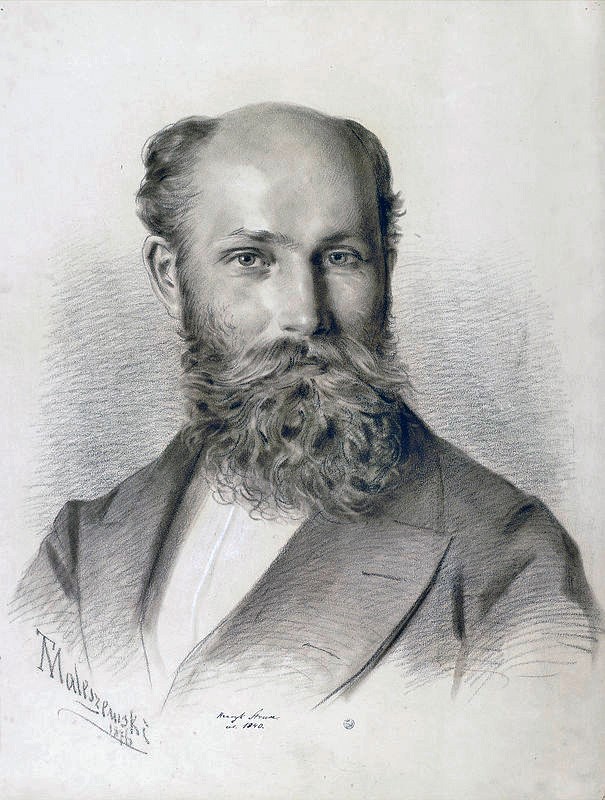
Henryk Struve, pseudonym Florian Gąsiorowski (born June 27, 1840 in Gąsiorów, died May 16, 1912 in Eltham) – was a Polish philosopher, psychologist, translator, esthetician, encyclopedist. He was the son of Georg Heinrich Christoph Franz Struve (Jerzy Krzysztof Franciszek Struwe) and Eugenie Josephina Charlotte Witte.
He attended gymnasiums in Warsaw and Piotrków, and in the years 1858-1863 he studied at the universities of Tübingen, Heidelberg, Erlangen, Gettynga, Halle, Leipzig, and Jena. In March 1863 he obtained a doctorate in philosophy from the University of Jena. In February 1863 he was appointed assistant professor of logic at the Warsaw School of Economics, and in November 1864 he was appointed associate professor of philosophy at that school.
Due to the change of the Main School into the Imperial University in 1870, he obtained his doctorate again in Moscow and in 1871 became a full professor of philosophy at the University of Warsaw (until 1903). In the years 1875-1894 he was the President of the Examination Committee for teachers. In 1868 he was elected a member of the Society of Friends of Sciences in Krakow. From 1873, a member of the Academy of Learning. He was also a member of the Warsaw Scientific Society. In 1903 he moved to England. He received a number of Polish honors such as Decorated the Grand Cross of the Order of St. Stanisław, the Commander’s Cross with the Star of the Order of St. Anna and the Commander’s Cross of the Order of Saint Włodzimierz.
Struve, had a wide range of philosophical interests, and was for many years a leading representative of Polish science. He did particularly meritorious work in the field of history and propaganda of Polish philosophy at home and abroad. As an eclectic philosopher with old-fashioned views, he also ruled on matters of art (against this background, his polemic with Stanisław Witkiewicz was loud). In philosophy, he combined ontological idealism with tri-cognitive positivism, whatever that means.

Below, the marriage of Henryk’s granddaughter Elsie Verina Turney to Hugh Cecil Fowler in 1918.










